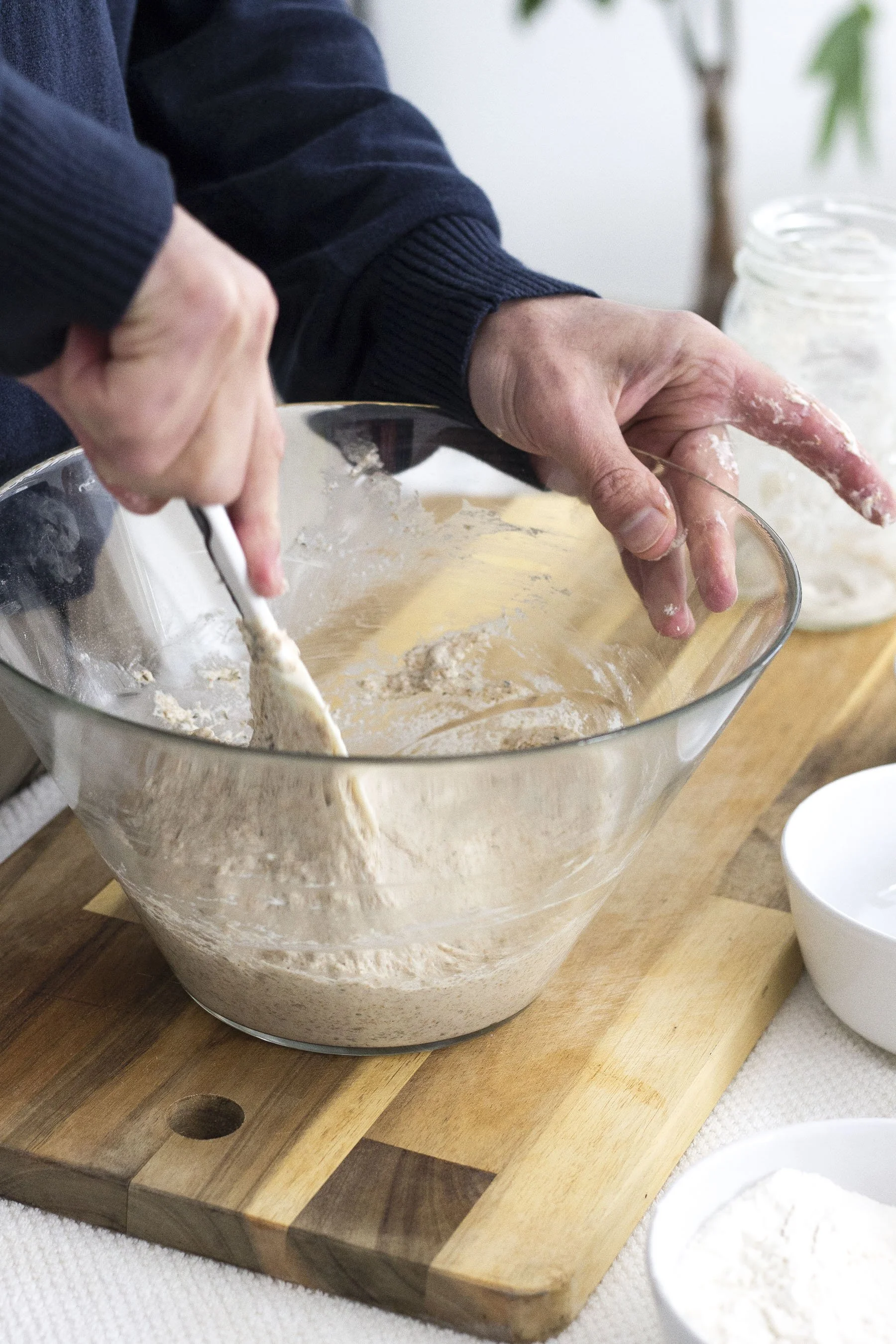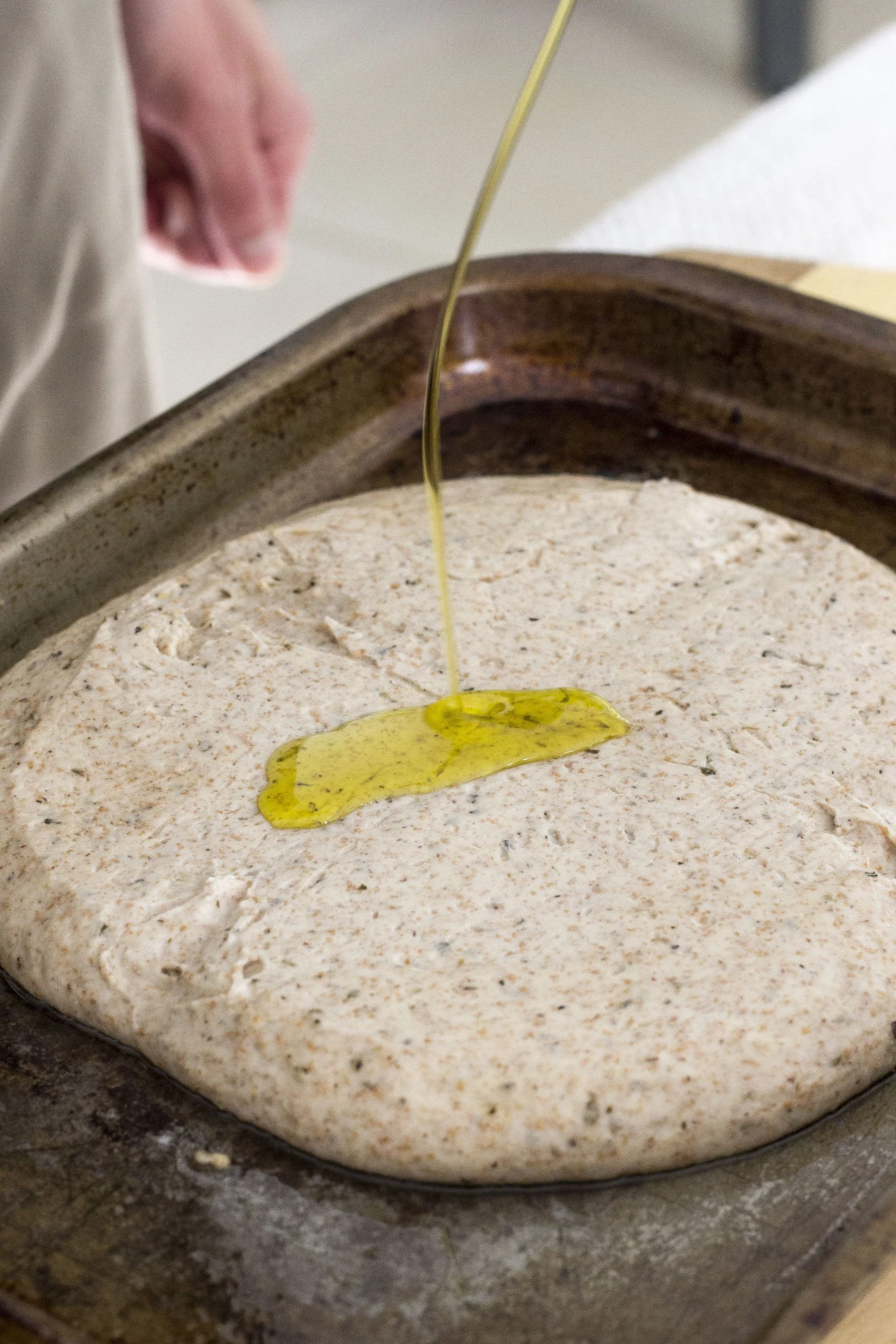Schiacciata All’Olio: A Memory of Olive Harvest in Tuscany
While living in Tuscany in 2020, we had the opportunity to participate in the entire olive oil making process, from harvest to bottle. This experience provided us with hands-on education on what it takes to produce olive oil in a region where its presence is ingrained in everyday life.
There are hundreds of olive cultivars growing around the world, with at least 400 known varieties in Italy alone. And just like understanding wine grapes, knowing about olive cultivars can indicate the flavor profile and where the olives that make the oil in the bottle were grown.
In Tuscany, three main olive tree varieties are generally co-planted and blended into one final oil, producing a complex and harmonious style.
-LECCINO: with a flavor that boasts of freshly cut grass, almond, and a lightly spicy finish.
-FRANTOIO: with intense notes of artichoke leaf, freshly cut grass, and green almonds with lovely bitter harmony.
-MORAIOLO: rich in polyphenols, which contribute to its bitterness and spiciness along with a strong herbaceous flavor and an intense, fruity, and floral aroma.
Proper storage is important to preserve flavors and aromas. Just like wine, it’s recommended to keep away from direct light, and heat, and to limit oxygen exposure once it's opened by sealing the bottle tight. And, unlike wine, olive oil is best fresh rather than aged, as it loses its vibrancy and the fat can develop rancid flavors.
Olive groves and olive oil are ingrained in everyday life in Tuscany with a history spanning thousands of years, thus olive oil is present in almost every Tuscan dish. On these cold days, our minds wander to the comfort foods of the region, with dishes such as Ribollita, a hearty bean and bread stew doused with fresh olive oil.
Late fall and winter is the best time of year to find local, freshly cold-pressed oil, bright green and spicy, perfect to douse many of the local dishes. We loved using this super flavorful oil to make schiacciata all’olio, a flatbread similar to focaccia, which we ate with every meal. (Recipe below)
Olive oil is just one of the subjects we’ll explore during our Tuscany immersion trip in June 2025. We'll be based in Panzano, making day trips to local food and wine producers while connecting to the local community to better understand the rich culture and history of the place. We'll cook together using ample, free-flowing olive oil and discover the intertwined relationship between the foods and wines of the region with their deep-rooted connection to the people.
Schiacciata all’olio - This is a variation of the traditional bread, which is not usually topped with anything except during grape harvest to make schiacciata all’uva.
Sponge:
1 1⁄2 package of dry yeast (10.5 grams)
3/8 cup warm water (3 ounces)
1⁄2 tablespoon of honey
4 ounces whole grain wheat flour
Dissolve the yeast in water; add sugar and flour and mix to create a sticky dough. Cover and let it rise in a warm place until the sponge doubles in size and begins to fall.
Dough
1 cup warm water (8 ounces)
3/8 cup olive oil (3 ounces)
1 tablespoon honey
1 tablespoon salt
15 ounces all-purpose flour, OR 00-flour if you have it
Topping (optional)
2 tablespoons of olive oil for the baking pan
1 tablespoon fresh rosemary and oregano, chopped
3 Roma tomatoes, sliced and lightly sprinkled with salt 1⁄2 teaspoon kosher salt
Procedure:
Add the dough ingredients in order to the sponge and combine thoroughly.
Knead the dough by hand, or with the hook attachment at medium-low speed, scraping down the sides of the bowl, until very soft, smooth and elastic. If the dough is too loose and not forming a ball, add a little more flour.
Coat an 18"x13" half-size sheet pan with the olive oil from the topping ingredients list; don’t use parchment paper.
With oiled hands, Place the dough in the middle of the baking sheet, and using a sharp knife cut a big X on the top to make spreading the dough on the pan easier. Press it lightly. Cover the dough and let it rest for 30 minutes in a warm area.
Oil your hands and press the dough from the middle out to fill the pan,using your fingertips to create dimples. Let the dough rest again once it gets too tight to move toward the edges of the pan. It should rise 1 1⁄2 times its size.
Heat the oven to 475°F convection-bake.
Gently press the dough to fill the rest of the pan. If using the topping, layer the tomatoes, sprinkle the herbs and kosher or sea salt. Let it rest in a warm area for 5 minutes.
Place the prepared dough in the oven and immediately turn the heat down to 375°
Bake for 25-30 minutes, turning the pan around halfway through, or until golden brown and not soggy around the tomatoes. Brush with more olive oil as soon as it comes out of the oven.














